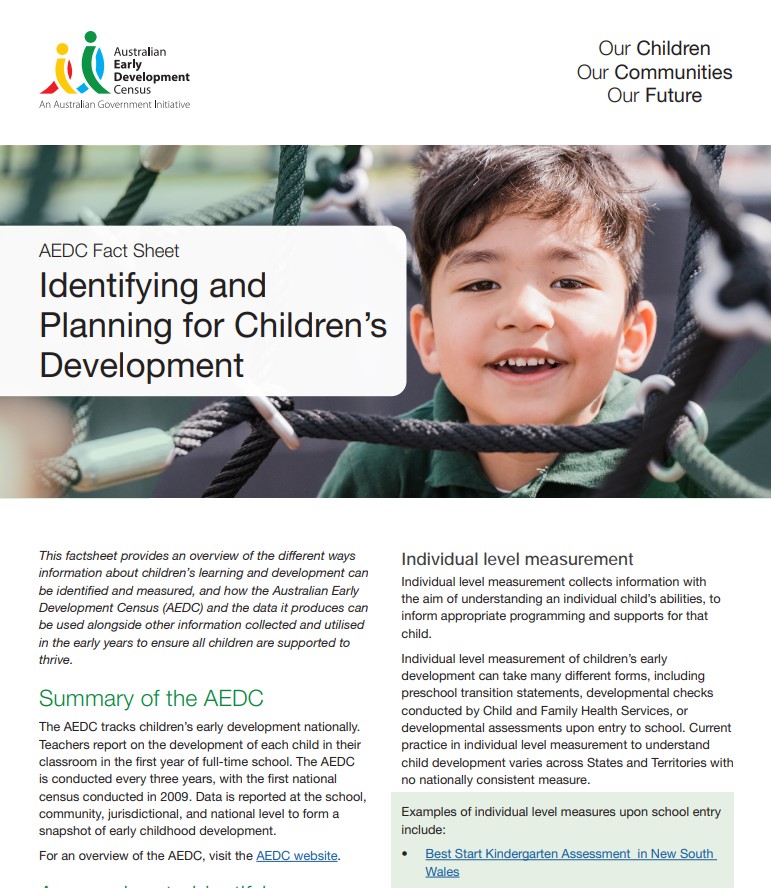Summary
This factsheet provides an overview of the different ways information about children’s learning and development can be identified and measured, and how the Australian Early Development Census (AEDC) and the data it produces can be used alongside other information collected and utilised in the early years to ensure all children are supported to thrive.
Approaches to identifying children’s development: Information about children’s learning and development can be captured in different ways with different objectives. These can be broadly categorised into individual and population level measurement.
Related resources
Fact sheet
About the AEDC Domains
Fact sheet
